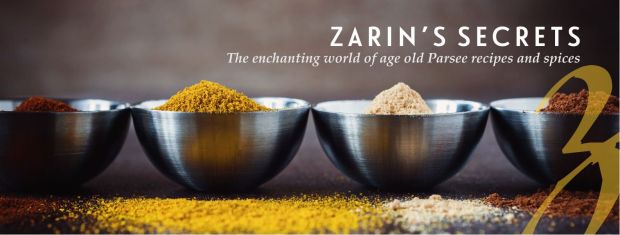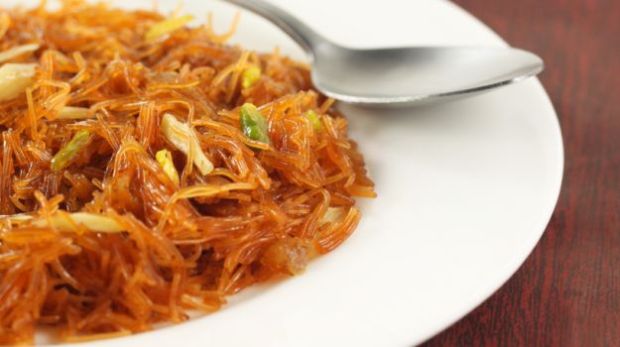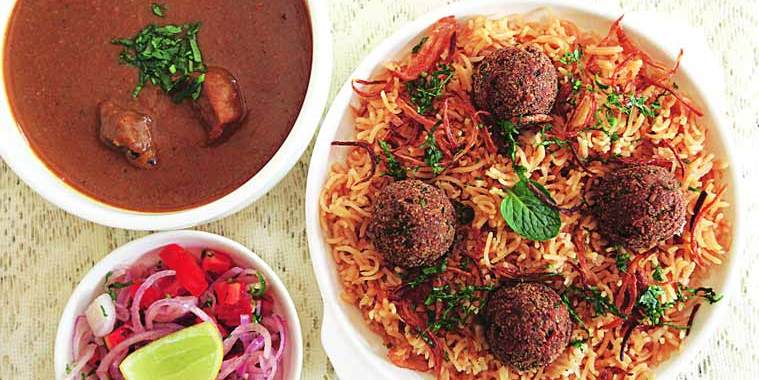Parsi cuisine. Everyone becomes just a little more alert when its mentioned, for whatever reason it is a cryptic cuisine which intrigues all. Maybe because the traditions and knowledge is limited inside the close-knit community or because the food is so similar yet different from other Indian cuisines (specially punjabi). While the infamous Dhansak is known by all, the likes of SodaBottleOpenerWala have been popularising the cuisine as a whole.
Until two months back I knew nothing about this community or cuisine. My solitary experience at SodaBottleOpenerWala was less than pleasing and I never dared to go back. Claimed as “authentic” it has set a benchmark for people looking to explore the lanes of Parsi community and food. I on the other hand, never bought it.

Image: Zarin’s Secrets
Comes into picture, Shelley Subawalla. A Parsi herself, she struggled with the hassle of importing Parsi spices from Mumbai every now and then, later coming up with her own company – Zarin’s Secrets. In order to ease the trouble of all Parsi Delhites, she started selling spices using her grandmother’s recipes. What started as a small business soon blossomed through word of mouth and people were calling from all over India. Oblivious to the fact how Parsi spices differed from the usual punjabi spices, having given an opportunity to learn about the culture and food firsthand from a Parsi, I couldn’t possibly say no!
The first thing I asked her was, how much does food matter to a Parsi person? What is its importance in the culture? Comes a resolute reply, a lot! Does our life revolve around food? No. Do we love our food? Yes. After a few days of different cuisines, we always come back to our curry rice, for its what we have grown up with and it is our comfort food. While I acted like a star-stuck child, awe-inspired from all this new knowledge, Shelley seemed baffled as to what I found so fascinating. She says, this is just normal for us, its how things are.
During our second interview, I had a ton of questions and this was just for part one of the series! So, we began with the basics. The cuisine is astonishingly simple yet different. A few signature dishes cooked on a daily basis and few spurred on good occasions, but most of them are prepared with just 4 signature spices (dhansak masala, curry masala, sambhar masala and dhana jeera) used in different combinations. Each spice is in itself a blend of 10 to 15 spices. (My first thought went straight to the kitchen! Just how organised it would be to keep a few basic spices, unlike the tons we have at our home, because obviously kulcha and channa masala are so different!) These spices constitute the roots of flavour and thus, the cuisine. Undeterred by how nagging it might get, I questioned again as how would she describe the cuisine. It’s strong for sure, but not overpowering. This answer seemed to describe everything. Not just in terms of flavour, in terms of the significance of food in the culture as well. Food is a big part of Parsi culture, with recipes passed down generations and every family having their own recipes but when asked about the origin, she says, its just followed. Traditions so ancient, the origin is lost on us. How could I not be amused!
Every weekend, Saturday is celebrated with curry rice. A coconut based curry, made with curry masala and served with white rice and kachumbar. The source of protein usually varies and depends on the family’s preference. Everything from potatoes, prawns, fish and meat can go well with the curry. Sundays are reserved for a Dhansak lunch and beer. Traditionally cooked with mutton, it can be substituted with chicken or vegetarian drumsticks for health purposes. The table on a Sunday afternoon is embellished with caramelised rice and kachumbar along with the showstopper Dhansak. While it is cooked on Sunday what is unknown to most, is how Dhansak is actually cooked on 4th day of someone’s death and never, under no sun or moon cooked on a happy occasion. Fish on the other hand is considered extremely auspicious and is the most consumed protein during celebrations. In fact, the house entrance is marked with a fish shaped chaap and the mithai is crafted in the same shape.

Image: food.ndtv.com
Weekends aren’t the only set staples. Every good occasion is marked by some signature servings and the meal regarded as Sagan-nu-bhonu (translating to good occasion-ka-food). This usually includes steamed rice, arhar dal, fry fish, fry ghost and the classic kachumbar made with onions, tomatoes, green chilli and coriander diced together. The fish is marinated in Parsi masala’s and then deep fried, however considering the new age revolution, now most people prefer baking to frying. The meal is followed by ravo or sev. Ravo is a Parsi version of punjabi sooji halwa, made with semolina; whereas sev is dry vermicelli, caramelised in water rather than milk and loaded with dry fruits, sugar, vanilla, cardamom and nutmeg (also regarded as jaiphal).
Certain other aspects of Parsi culture also shine through in food; like their love for bhakras and eggs. Bhakras, are sweet tea time biscuits (also regarded as a Parsi donuts) made with atta and sooji only to be fried,the entire family looks forward to it. According to Shelley, they can last long in an airtight container, but that never happens because everyone gobbles them piping hot. Shelley inherited the recipe of Bhakras from her grandmother and hopes to pass it on to her daughter one day. Eggs are another Parsi favourite. As narrated to me, they can be cracked open on top of any dish, whether its potatoes, cutlets, curry; eggs make everything better.
It is beautiful how the passage of time has progressed but the traditions, even though modified have remained in the community, showcasing themselves in food. For it is the most humble thing that binds us all.
Featured Image Courtesy: Indianexpress.com
Disclaimer: This article is in collaboration with Shelley Subawalla, who generously decided to share information about her culture and food. However, in no way is it biased, influenced or aimed for promotion. It is not sponsored.

Reblogged this on Eat N Travel to Live.
LikeLiked by 1 person